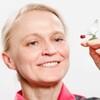Solutions against foot pad dermatitis in broilers and turkeys
Published: March 30, 2021
Source : Dr. Hannele Kettunen
R&D Manager. Dr. Eija Valkonen, Area Sales Manager.

For the poultry industry, the old saying of horsemen, ”no foot, no horse”, could be re-phrased into “no foot, no bird”. The rapid growth rate and large size of meat poultry poses a challenge on their foot health. Add to that a humid weather, and the likelihood of foot pad dermatitis (FPD) increases significantly.
Bird welfare and economical issue
Occurring in the plantar surface and toes of poultry, FPD is a form of contact dermatitis (1). The condition is relatively common in broiler chickens and turkeys, both in the parent and progeny stocks (2). Lesions of footpads cause discomfort to the birds, and are thus an obvious welfare issue. An economic aspect is heavily involved, as FPD lesions decrease the commercial value of chicken feet which are highly priced and favored as gastronomic delicacy in many areas.

Along with FPD, other forms of contact dermatitis found in poultry include hockburns and breast blisters (1). All these conditions appear with time, and become more severe with the increasing age and size of the birds. As they are easy to observe and score from live birds on farms, they are commonly used as quality indicators of housing management and bird welfare.
Tissue-level changes in FPD
Characteristics of FPD include necrotic lesions, abscesses, hyperkeratosis and separation of the keratin layers of the skin. Increased levels of inflammatory mediators such as interleukin (IL)-1β, tumor necrosis factor(TNF)-α, and toll-like receptor(TLR) 4 have been detected in footpad lesions (3). Concomitantly, the increased ratio of matrix metalloproteinase (MMP) -2 to its tissue inhibitor (TIMP) suggests increased collagen degradation at the sites.
Although FPD begins as a superficial dermatitis without bacterial infection, the deeper lesions of more advanced forms allow the entry of pathogenic bacteria into the bloodstream (1). The pathogens may find their way to leg joints, thereby harming the walking ability of the birds even more. In fact, FPD has been associated with leg weakness of older turkeys (2).

The association of FPD with systemic bacterial infections by Gram-positive cocci has been shown in broiler breeders (2). For the meat birds, bacterial translocation into internal organs will inevitably lead to product downgrading or even carcass rejections, adding to the economic burden of FPD.
FPD is multifactorial and can be controlled
Damp and caked litter is seen as the most important risk factor for FPD (1). The ultimate treatment and prevention of the condition – covering moist litter with dry material whenever needed – remains out of reach for most commercial meat poultry operations. Moisture control by adequate ventilation and temperature management is however of outmost importance for limiting the incidence of FPD.

Fortunately, the multifactorial nature of FPD allows several other ways for reducing the incidence and severity of the condition. Seasonal factors, litter material type, stocking density, bird genetics, bird weight, diet, and nutritional deficiencies have all been identified as contributing factors for FPD. The interplay of several factors suggests that for the most economical and rational FPD control program, the risk factors should be assessed separately for each poultry unit.
Regular lesion scoring on-farm or at the slaughterhouse helps in the local optimization of management routines which keep FPD under control. Experiences from Finland speak for the efficacy of a rigorous monitoring program (4). For every slaughtered broiler batch, 100 feet are scored by official meat inspection veterinarians. Each foot is given a score of 0 (healthy), 1 (mild changes), or 2 (severe changes), to calculate the foot pad score of the flock. Score value under 40 indicates good footpad health, while a score value over 80 is a sign of obvious problems and leads to mandatory actions for improving the situation. This obligatory footpad scoring reaches every Finnish broiler batch and has played a key role in the present good situation. In years 2012-2016, good footpad heath was observed in 95-98% of Finnish broiler batches (4).
Focus on gut health
As wet litter problems in poultry houses are tightly associated with intestinal disturbances such as diarrhea, dysbiosis, and the so-called leaky gut syndrome, measures to improve nutrient digestibility, microbial balance and gut barrier function are keys for a successful FPD control program.

The gut wall is a true multitasker, as it needs to absorb nutrients, host a commensal microbiota and simultaneously maintain the barrier against unwanted particles and pathogenic organisms, along with its immunological and hormonal tasks. Insults on this homeostasis lead to inflammation which includes degradation of the supportive extracellular matrix of the gut wall. The most ubiquitous structural protein of gut wall is collagen. During inflammation, collagen is degraded by specific inflammation-associated MMP enzymes, such as MMP2, MMP7, and MMP9. These enzymes harm the intestinal integrity and pose a severe threat to gut barrier functions, thus increasing the likelihood of diarrhea and wet litter problems.
In-feed resin acids supported intestinal homeostasis
Coniferous resin acids have long been known for their anti-inflammatory and antimicrobial properties in wound healing. Recent research has proven that in-feed resin acids suppress inflammation-associated collagen degradation in the intestinal wall of broiler chickens (5). The effect is mediated by the decreased MMP-activity in the intestinal epithelium of resin acid fed birds. The same study demonstrated that the density of inflammatory T-cells in the epithelium was decreased as a response to diet-derived resin acids. This is a strong evidence for the hypothesis that in-feed resin acids support intestinal homeostasis of poultry.
Resin acids reduced FPD lesions in broiler chickens
A trial with 1400 Ross 308 broiler chickens was conducted at the poultry facility of the University of Warmia and Mazury, Poland (6). The completely randomised 2 × 2 factorial design had two dietary resin acids (RAC; Progres®, Hankkija Oy) treatments and two coccidiostat treatments: T1 – RAC 0 mg/kg + chemical coccidiostat (CC) diclazuril 1 mg/kg, T2 – RAC 0.5 mg/kg + CC 1 mg/kg; T3 – RAC 0 mg/kg with ionophoric coccidiostat (IC) salinomycin 70 mg/kg; and T4 – RAC 0.5 mg/kg + IC 70 mg/kg. The birds were kept on a commercial-type environment throughout the 42-day trial.

Figure 1. Effect of RAC (Progres®; Hankkija Ltd) at 500 g/ton on footpad lesion scores in a 42-day trial with male broiler chickens. RAC was tested with a chemical coccisiostat (CC, Diclazuril) and ionophoric coccidiostat (IC, Salinomycin). Different letter (a,b) indicate significant difference between the treatments (P < 0.05). Reproduced from Kettunen et al. (2017).
In combination with IC, RAC improved the FPD scores significantly by 17.5% on d28, and by 18.4% on d42 (Figure 1). Combined with CC, on d42, a numerical improvement of FPD scoring by 6.7% was observed, together with a significantly improved body weight gain by 3.3% and feed conversion ratio by 5.7%.
Lower FPD lesion scores in turkeys fed with resin acids
In a turkey trial conducted at the University of Warmia and Mazury, Poland, 600 BIG 6 female turkeys were divided into the following dietary treatments: T1 – basal diet; T2: diets supplemented with RAC (Progres®, Hankkija Oy) at 0.5 kg/t (starters and finisher) and 1.0 kg/t (growers); T3 – diets supplemented with RA at 0.75 kg/t (starters and finisher) and 1.5 kg/t (growers). The lower dosage of the resin acids significantly increased the body weight of birds by 1.6%, and the higher dosage by 2.1%. Both treatments also significantly improved the feed conversion ratio and European Efficiency Index (7).

Figure 2. Effect of RAC (Progres®; Hankkija Ltd) on footpad lesion scores in a 105-day trial with female turkeys. RAC in feed at a lower (500–1000 g/ton) and higher (750–1500 g/ton) dosing. Different letter (a,b) indicate significant difference between the treatments (P < 0.05). Reproduced from Lipiński et al. (2020).
Litter quality was significantly improved by the resin acid treatments on d21, d63 and d105, and the footpad lesion scores were significantly lower for the resin acid treatments on weeks 9 and 15 (Figure 2). The magnitude of the effect for the FPD scores was between 23.1% and 38.5%, suggesting a remarkable ability of resin acids to reduce footpad lesions in turkeys.
Litter quality was significantly improved by the resin acid treatments on d21, d63 and d105, and the footpad lesion scores were significantly lower for the resin acid treatments on weeks 9 and 15 (Figure 2). The magnitude of the effect for the FPD scores was between 23.1% and 38.5%, suggesting a remarkable ability of resin acids to reduce footpad lesions in turkeys.
SUMMARY
Footpad dermatitis is a relatively common problem in broiler and turkey farms. Wet litter is a significant predisposing factor for this condition. Systematical monitoring of the footpad health is the key for optimizing local management strategies and keep this poultry welfare risk under control. By supporting intestinal homeostasis of the birds, it is possible to reduce the incidence of diarrhea and thus promote bird welfare and good footpad health. In-feed resin acids have proven their efficacy against footpad lesions in broiler chickens and turkeys, and offer an easy way of reducing the burden of this condition in meat poultry operations.
(1) Shepherd and Fairchild, 2010. Poultry Science 89:2043–2051.
(2) Thøfner, I.C.N. et al. 2019. Vet. Res. 50:38
(3) Chen et al., 2016. Front. Cell. Infect. Microbiol. 6:26.
(4) Pohjola et al., 2017. Abstract in: European Symposium of Poultry Welfare, Ploufragan, France 19–22 June 2017
(5) Aguirre et al., 2019. Vet. Res. 50:15.
(6) Kettunen et al., 2017. JAAN 5:1–8.
(7) Lipiński et al., 2020.
Related topics:
Mentioned in this news release:
Hankkija
Hankkija
Recommend
Comment
Share

Would you like to discuss another topic? Create a new post to engage with experts in the community.














